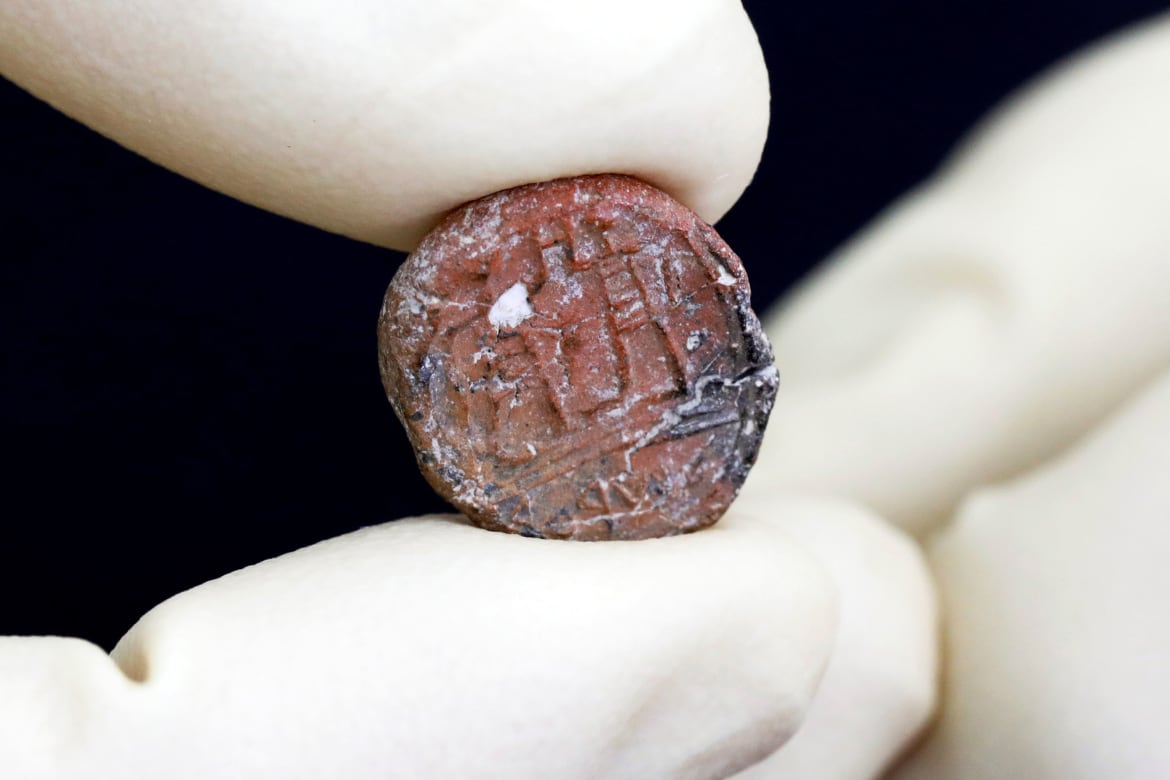More Biblical Battles by the Western Wall…
Now This
***********************************
Last week, Israeli archaeologists in Jerusalem announced that they had discovered a 2,700 year old clay seal impression that, in their estimation, once belonged to the governor of Jerusalem.
In picture a conservator shows a 2,700-year-old clay seal impression which archaeologists from the Israel Antiquities Authority say belonged to a biblical governor of Jerusalem and was unearthed in excavations in the Western Wall plaza in Jerusalem’s Old City January 1, 2018.
The excavator Shlomit Weksler-Bdolah said that the discovery “supports the Biblical rendering of the existence of a governor of the city in Jerusalem 2,700 years ago.” This would make the seal impression significant in two ways: it would provide archaeological evidence that there was an Israelite administrative presence in the land roughly three millennia ago and it would confirm that the administrative structures described in the Bible actually existed.
The coin-sized impression is inscribed in Hebrew and reads “belonging to the governor of the city.” It also shows two standing figures who face one another and wear striped, knee-length garments. The Israel Antiquities Authority said that the seal was probably either a souvenir sent on behalf of the governor or originally attached to “an important transport” of some kind.
People have known about the royal-appointed governors for several millennia. After all, the Bible mentions governors of Jerusalem twice: in 2 Kings, when Joshua occupied the position during the reign of King Hezekiah, and in 2 Chronicles, when Masseiah enjoyed this rank under King Josiah. After the King himself, the governor occupied the highest local civic rank in the city. It is important to note, however, that the impression does not mention either Jerusalem or the governor by name.
The clay impression was found near the Western Wall Plaza in the Old City of Jerusalem, as part of excavations of a refuse dump at the foot of the southern wall that surrounds Jerusalem’s Old City. These aren’t the only important seals found at the site. In 2015, a seal inscribed with the name of King Hezekiah was unearthed at the dump site. And in March 2016, a personal seal belonging to a first temple era woman named Elihana was found there. Personal seals denoting the identity, genealogy and social status of the owner were used for signing documents and overwhelmingly belonged to men. That a woman possessed such a seal indicated that she had both high social status and financial resources. One imagines that she must have been quite exceptional. But because the name Elihana does not appear in the Bible, the seal received somewhat limited media attention.
It may seem like historical detritus, but the discovery of any evidence of Judaism near the temple is a politically delicate matter. Not only is the find being used to confirm the authenticity of the Biblical story, it is being used in a larger political debate. The excavations that are taking place are located close to the homes of Palestinians in Silwan. The discovery of Jewish artifacts in Silwan has significance not only to those trying to make sense of the past, but also for those trying to make political claims about the present and future. As a result, Palestinian authorities will frequently dismiss discoveries in this area as forgeries.
Source: Candida Moss Daily Beast


